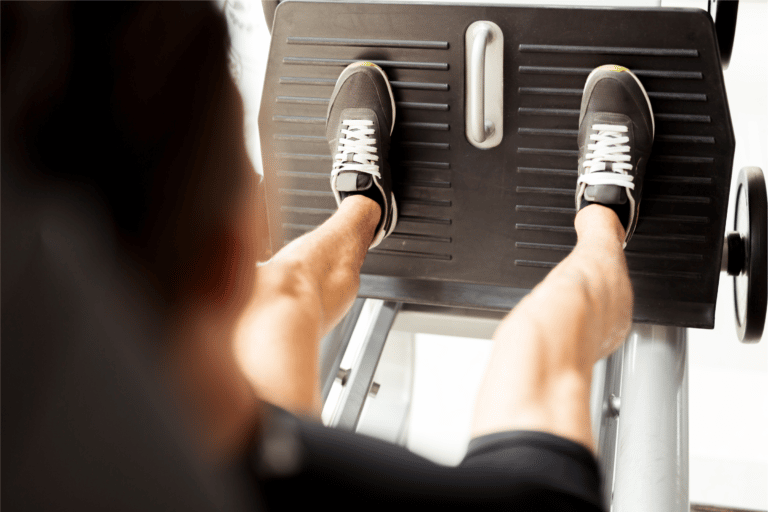Adjusting Post-Run Recovery During Race Training: Optimizing Your Routine
Training for a race involves more than just accumulating miles; it requires a strategic approach to recovery to maintain performance and prevent injury. During race training, it’s essential to adjust your post-run recovery process based on intensity and volume of your workouts. Setting realistic goals is a cornerstone of successful race training, and those goals must include recovery plans tailored to your body’s needs.
As a running coach, I’ve seen firsthand the importance of personalized recovery adjustments. Each runner’s body responds differently, which is why a one-size-fits-all recovery plan is less than ideal. Performance enhancements come from a well-executed recovery strategy that considers the specific demands placed on the body during race training.
To optimize recovery, I recommend a combination of active rest days, proper nutrition, and adequate sleep. But it doesn’t stop there; paying attention to how your body feels can guide small adjustments that make a significant impact. Recovery is a dynamic process, and as you navigate through your training schedule, being attuned to your body’s signals helps prevent overuse injuries and prepares you for the next training session, leading to continuous improvement in both training and race day performance.
Adjusting Post-Run Recovery During Race Training
Post-run recovery is essential to reduce muscle soreness and prevent injuries. Understanding the science behind recovery and common mistakes can help optimize the process.
The Science of Recovery
After a run, my body undergoes several physiological changes. Stress and fatigue induce muscle microtears, leading to inflammation and muscle soreness, commonly known as DOMS (Delayed Onset Muscle Soreness). Proper recovery involves orchestrating the right conditions for the body to repair these microtears and adapt, which enhances muscle recovery and overall performance. Here’s a simple breakdown:
- Stress: Running places a demand on the musculoskeletal system.
- Inflammation: The natural response to repair the microdamage.
- Muscle Soreness: Often peaks 24-48 hours post-exercise.
- Recovery Process: Aims to reduce soreness and restore muscle function.
Key Recovery Elements
- Hydration: Replenishes fluids and supports metabolic processes.
- Nutrition: Provides the building blocks for muscle repair.
- Sleep: Allows for hormonal and nervous system recovery.
Common Recovery Mistakes
I notice that runners often fall into avoidable traps that hinder their recovery. One typical mistake is neglecting hydration post-run, which slows down the recovery process. Another is skipping proper nutrition; the body needs a blend of proteins and carbohydrates to rebuild muscle and replenish energy stores effectively. Ignoring sleep is yet another common error — it’s crucial for cognitive function and physical restoration.
Common Mistakes:
- Insufficient hydration
- Poor nutritional choices
- Lacking quality sleep
Addressing these areas ensures a more efficient recovery, setting runners up for their next training session or race with decreased fatigue and soreness.
Optimizing Recovery Strategies
In race training, recovery is as critical as the workouts themselves. Implementing precise recovery strategies immediately after your runs can enhance training adaptation and performance.
Active vs. Passive Recovery
Active recovery involves light exercise, which can be crucial for reducing muscle stiffness and promoting blood circulation to flush out waste products. Following a tough workout, I advise a short, low-intensity activity such as cycling or swimming. These activities help maintain fitness without overburdening the muscles.
Passive recovery, on the other hand, means complete rest with no physical activity. It is essential to allow your muscles to repair and rebuild, particularly after a race or a very long or intense workout. During this time, the body focuses on repairing the microtears in muscle fibers and restoring glycogen levels. Schedule passive recovery days strategically in your race training to ensure you’re not overtraining.
Post-Run Nutrition
Post-run nutrition is non-negotiable for optimal recovery. Aim to consume a meal or snack with a 3:1 ratio of carbohydrates to protein within 30 minutes after your run. This helps in replenishing glycogen stores and repair muscles more efficiently. For instance, a smoothie with banana, protein powder, and a handful of oats can be both refreshing and restorative.
- Proteins provide the amino acids necessary for muscle repair.
- Carbohydrates refuel your body’s energy stores.
A practical chart for post-run meals/snacks could look like this:
| Post-Run Meal | Carbohydrates | Protein |
|---|---|---|
| Smoothie | Banana, Berries, Oats | Whey Protein Powder |
| Sandwich | Whole Grain Bread | Chicken Breast |
| Rice Bowl | Brown Rice | Black Beans |
Hydration Techniques
Hydration is crucial for recovery because it facilitates nutrient transport and helps manage body temperature. Drinking water is paramount, but after long or hot runs, it’s beneficial to include drinks with electrolytes to replace those lost through sweat.
Here’s a simple hydration guideline I follow, which can be tailored based on individual sweat rates:
Post-Run Hydration
- Immediately post-run: 16-20 ounces of water
- If running for longer than 60 minutes: Include an electrolyte drink
- Continue to hydrate regularly throughout the day
Remember, proper hydration starts well before your run and doesn’t end at the finish line. Aim to drink fluids consistently throughout the day, and don’t wait until you feel thirsty to start rehydrating.
Injury Prevention and Management

To maintain consistent training and avoid downtime, injury prevention and management are critical for runners. Knowing how to proactively prevent injuries and handle them should they occur can save you weeks or months of training disruption.
Proactive Measures
I focus on helping runners implement strategic injury prevention techniques. Here are key proactive steps:
- Gradual Progression: Avoid increasing mileage or intensity more than 10% per week to prevent overuse injuries.
- Strength Training: Engage in exercises that strengthen muscles and support running mechanics.
- Adequate nutrition: Ensure muscle protein synthesis and recovery by consuming enough protein and balanced meals.
- Proper Footwear: Choose running shoes that provide the right balance of support and cushioning tailored to individual needs.
| Injury Type | Prevention Tip | Additional Notes |
|---|---|---|
| Shin Splints | Gradually increase training intensity; include calf strengthening exercises | Common in new runners |
| Achilles Tendinitis | Strengthen calf muscles; ensure proper shoe fit | Overuse can lead to chronic condition |
| Plantar Fasciitis | Regular foot arch massages; wear supportive shoes | Often feels worse in the morning |
| Patellar Tendinitis | Strengthen the quadriceps; properly warm up before running | Can be exacerbated by poor running form |
Dealing With Common Running Injuries
When injuries occur, it’s crucial to manage them effectively:
- R.I.C.E Method: Rest, Ice, Compression, and Elevation are initial steps to reduce inflammation.
- Professional Assessment: Visit a healthcare provider for severe or persistent pain to get an accurate diagnosis.
- Modified Training: Consider cross-training or reduced running volume to maintain fitness without aggravating the injury.
| Common Injury | Immediate Action | Recovery Focus |
|---|---|---|
| Iliotibial Band Syndrome (ITBS) | Foam rolling the affected area; reduce running mileage | Strengthening the hip abductors can help prevent recurrence |
| Medial Tibial Stress Syndrome | Rest and apply ice to reduce inflammation | Gradual return to running with emphasis on soft surfaces |
| Meniscus Injuries | Seek medical evaluation; avoid activities causing pain | Recovery may vary widely based on severity and treatment |
| Patellofemoral Pain Syndrome (PFPS) | Reduce activities that worsen symptoms; apply ice | Focus on strengthening quadriceps and glutes |
Recovery Techniques and Practices
Effective post-run recovery encompasses multiple techniques that address muscle soreness, promote flexibility, and enhance overall training. It’s crucial to integrate these methods consistently after each run.
Stretching and Foam Rolling
Stretching is a fundamental recovery method that helps maintain range of motion and mitigate tight muscles. After runs, I focus on dynamic stretches to target key running muscles. Here’s a routine I recommend:
- Hamstrings: Place your foot on an elevated platform and gently lean forward to feel a stretch.
- Quadriceps: Stand on one leg and pull the other foot towards your glute, keeping the knee pointed down.
- Calf muscles: Step one foot back, press the heel down, and lean forward while keeping the leg straight.
Foam rolling, on the other hand, aids in breaking down knots and promoting blood flow. Spend about 1-2 minutes on each major muscle group using a foam roller, applying gentle pressure to areas of tension.
Strength and Cross-Training Exercises
Incorporating strength exercises into recovery can help improve posture and prevent injuries. I often include these exercises 2-3 times a week:
- Glute bridges: Strengthening the glutes can support better running form.
- Planks: These enhance core strength, which is crucial for maintaining good running posture.
Cross-training is another important aspect of recovery. Low-impact activities such as swimming, cycling, or yoga can keep you moving on rest days without the stress of additional miles.
Mindful Recovery Methods
Mindful recovery methods like yoga combine movement with breath control to enhance relaxation and focus. Practicing yoga can help improve flexibility and lower the risk of running-related injuries by:
- Encouraging a broader range of motion.
- Reducing lactic acid build-up through consistent and deep breathing patterns.
In my experience with evidence-based recovery techniques, the consistent application of these mindful practices significantly contributes to a resilient and balanced running body.
Recovery Planning and Adjustment

Creating a solid recovery plan is crucial for endurance athletes to avoid overtraining and achieve peak performance. Personalizing your recovery plan and adapting it during training peaks and tapers allows you to meet training demands while maintaining a healthy balance.
Personalizing Your Recovery Plan
As a UESCA certified running coach, I stress the importance of tailoring your recovery plan to your individual needs. Here’s how you can personalize your plan:
- Listen to Your Body: Track daily fatigue levels and tweak your recovery days if you’re feeling worn down.
- Set Clear Goals: Align recovery strategies with your specific marathon training goals.
For example, if your goal is a marathon, your recovery day might include a gentle bike ride or swim to promote active recovery while also keeping your legs fresh for the next run.
Adapting Recovery During Training Peaks and Tapers
Adjusting your recovery plan during intensified training periods or tapering before a race is paramount.
- Training Peaks: Increase rest days and consider adding gentle cross-training to manage fatigue during high-volume weeks.
- Tapers: Prioritize rest and reduce mileage substantially, focusing on maintaining your running form and muscle function.
Here are strategies I recommend based on the trend in training:
| Week Type | Recovery Focus | Example Activities |
|---|---|---|
| Peak Week | Extra Rest Day | Yoga, Light Walk |
| Peak Week | Cross-Training | Cycling, Swimming |
| Taper Week | Active Recovery | Low-intensity run, Foam rolling |
| Taper Week | Rest | Quality sleep, Nutrition |
Adjusting your recovery calendar should reflect your journey, taking into account the ebb and flow of intensive training cycles. Remember, recovery is not a one-size-fits-all, and timely adjustment is key to getting to the start line ready to run your best race.






